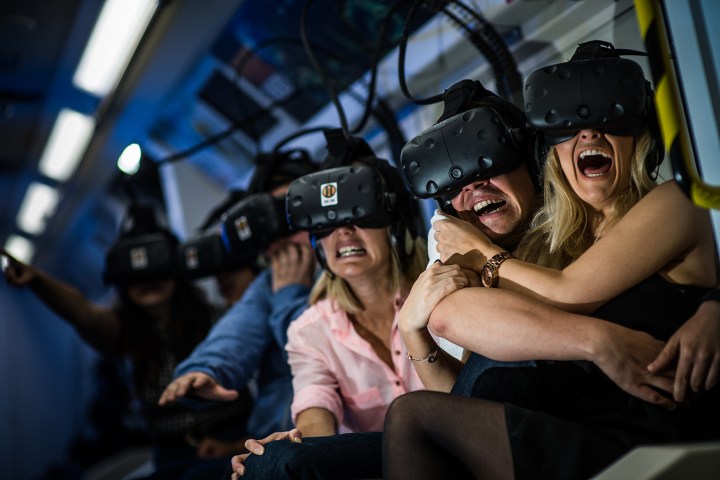
Nvidia is one of the main players in PC-level VR solutions, with its GeForce and Quadro GPUs being optimized not just for gaming and high-end professional graphics, but also for driving VR systems. The company has also been working on creating multi-user VR systems, and it has just introduced a new proof of concept aimed at letting multiple players experience the same virtual worlds.

The system is being shown off at the GPU Technology Conference (GTC), where Nvidia is demonstrating a number of VR technologies. The prototype is a massive system, stocked with four Nvidia Quadro P6000 GPUs that run four virtual machines on a PC server and uses HTC’s Lighthouse tracking system.
Via the combination of graphics power and HTC’s Vive Business Edition headsets, the system can power VR for four people who share the same physical space. It’s intended to show how multi-user VR systems can be created for applications like amusement parks, arcades, and military and first-responder emergency training. The system can be packed into minimal space and require minimal power and cooling, allowing for portable systems that can be quickly deployed.
While the system was originally conceived for multi-user VR, Nvidia hopes it will have other use cases. Mixed-reality spectator view is one concept, in which participants wear head-mounted displays driven by some virtual machines while others drive observer cameras.
As Tom Kaye, senior architect at Nvidia, puts it, “The possibilities are endless. With the addition of remote management and reliability features, such as multiple templates, clone on boot and remote rebuilds, we could see system builders working to create a robust, ready-to-deploy multi-user VR appliance.”
Other companies are using the system for their own solutions, such as MonsterVR, a community-driven VR development studio and Cavrnus, which focuses on collaborative VR solutions. According to Anthony Duca, Cavrnus founder and CEO, ““When NVIDIA shared this system with us, we knew it would be an ideal solution for our collaborative VR platform for our most demanding users. The feedback and reaction to the multi-user, virtualized system, particularly in the engineering and defense markets, has been tremendous.”
Anyone who’s attending GTC can check out the system in person. Nvidia partners who are interested in building their own multi-VR systems can check out Nvidia’s design guide for more details.



